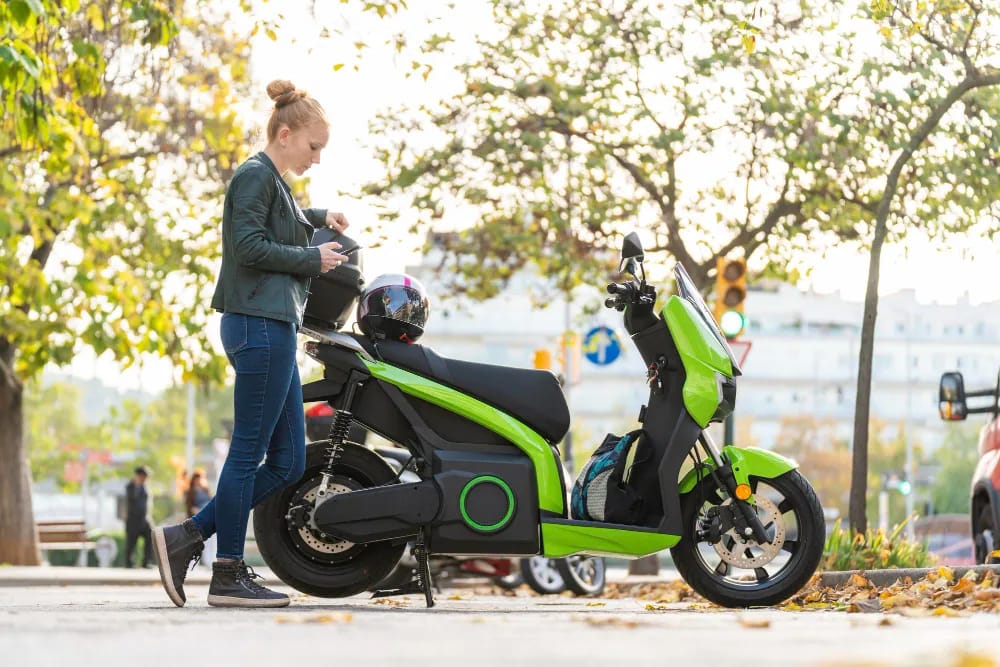Electric scooters have rapidly become one of the most popular choices for eco-friendly and convenient urban transport. Whether you’re using a standard commuter scooter or an off road electric scooter, the battery is the heart of the machine. A good battery ensures smooth performance, longer rides, and reliable power, while poor battery care can cut your scooter’s lifespan short.
In this article, we’ll dive into everything you need to know about electric scooter batteries, from types and performance to maintenance tips and replacement advice.
Types of Electric Scooter Batteries
1. Lithium-ion (Li-ion) Batteries
Most modern scooters, especially premium and off-road models, use lithium-ion batteries. They’re lightweight, energy-dense, and offer long cycle lives. A well-maintained Li-ion battery can last 2–3 years or 500–1000 charging cycles.
2. Lead-Acid Batteries
Older and budget scooters sometimes use sealed lead-acid batteries. They’re heavier, less efficient, and don’t last as long. While cheaper, they’re less common today due to weight and performance limitations.
3. Lithium-Polymer (LiPo) Batteries
A variant of lithium batteries, these are found in high-performance scooters. They provide better discharge rates but require more careful handling.
How Long Do Electric Scooter Batteries Last?
The lifespan depends on several factors:
- Battery Type: Li-ion lasts longer than lead-acid.
- Charging Habits: Frequent deep discharges shorten lifespan.
- Usage: Riding uphill, carrying heavy loads, or using turbo mode drains power faster.
- Storage Conditions: Extreme temperatures damage battery cells.
On average, a lithium-ion battery in an off road electric scooter lasts about 2–4 years with proper care.
How to Maintain Your Scooter Battery
- Charge Regularly – Don’t let the battery fully drain before recharging.
- Avoid Overcharging – Unplug when the battery reaches 100%.
- Store Properly – Keep the scooter in a cool, dry place away from direct sunlight.
- Partial Charging – For long-term storage, keep the battery at 40–60%.
- Use Original Chargers – Cheap alternatives may damage the battery management system (BMS).
Signs Your Battery Needs Replacement
- The scooter doesn’t cover as much distance as before.
- Takes longer than usual to charge.
- Sudden drops in battery percentage during rides.
- Scooter powers off unexpectedly even with charge left.
If you experience these issues, it may be time for a new battery. Many trusted off road electric scooter sellers offer replacement options or professional servicing.
Tips for Maximizing Off-Road Scooter Battery Life
Since off-road models are built for tougher conditions, they often face higher strain. To extend battery life:
- Ride at moderate speeds when possible.
- Avoid deep water or mud that may damage the electrical system.
- Use eco mode on flat terrain to conserve power.
- Schedule regular maintenance checks.
Conclusion
The electric scooter battery is the most crucial component of your ride, determining performance, speed, and range. By understanding battery types, following proper maintenance practices, and knowing when to replace, you can maximize your scooter’s lifespan. Whether you’re cruising city streets or exploring trails on an off road electric scooter, taking care of the battery ensures you enjoy a reliable and powerful ride every time.




